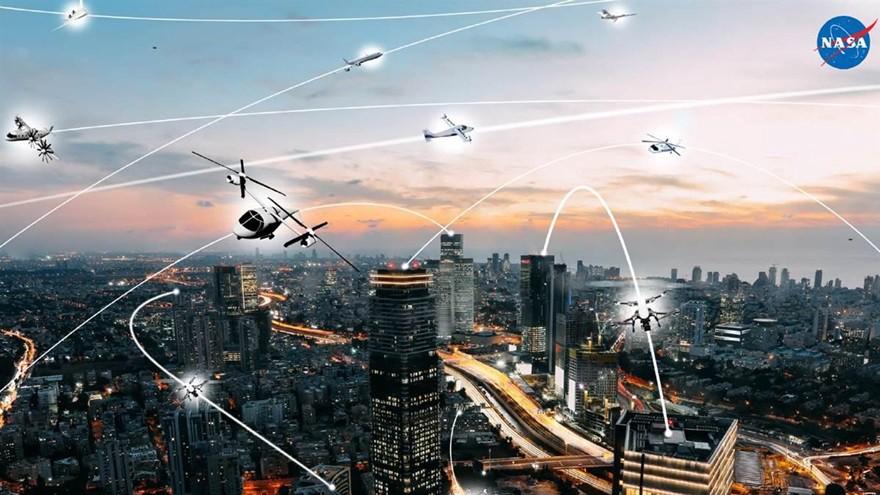The Flight Path to Urban Air Mobility Success May Be on the Ground
The time for strategic planning for UAM is now

Much of the conversation about urban air mobility (UAM) has been focused on the “air” pieces of the puzzle: The challenges of integrating fleets of VTOLs into densely populated, high-rise structure-filled urban environments; the technological challenges posed by electric-powered aircraft; the ramifications UAM will have on air traffic control; and mitigating the noise vehicles will have on urban neighborhoods.
A team of researchers from Poland’s WSB University and India’s Bundelkhand University raised another challenge UAM stakeholders must address if UAM is to succeed long-term: The considerations city planners must take into account as they guide the development of their metropolises toward a future filled with aircraft ferrying passengers to and from rooftops, and autonomous drones (aka UAVs) delivering parcels or surveying everything from active-shooter situations, to fires threatening property and lives in high-rise buildings.
City Planners Must Consider UAM Now
Published in December, 2021, the study, A Practitioner Briefing: Urban Air Mobility and Sustainable Urban Mobility Planning (SUMP), was conducted under the auspices of UIC2, the Urban-Air-Mobility Initiative Cities Community of the EU’s Smart Cities Marketplace. The purpose of the study was, in part, to raise awareness among city planners to something many in the UAM community already know: The advent of UAM is likely much closer than imagined. The time for strategic planning and, ultimately, execution of those plans is now.
The science fiction of animated TV series, such as The Jetsons, is now science fact, with aviation pioneers developing passenger aircraft named Jetson and package-delivery services developing UAVs named Elroy. In other words: The future is now!
UAM: Let’s Cut to the Chase
Filmmakers coined the term “Let’s cut to the chase” referring to moving the plot ahead to the chase scene, a scene filled with good guys and bad guys pursuing each other in cars, planes, on foot, or horseback. Let’s follow their lead. These are the conclusions the researchers reached in their urban air mobility and sustainable urban mobility planning practitioner briefing:
- Short-term: Initiate and coordinate public discourse in which the potential benefits and challenges of UAM are discussed in an unbiased and open manner.
- Short-term: Co-create with different stakeholder groups in different forms (e.g., advanced simulations and augmented reality experiences) with a focus on use cases that serve the public good.
- Mid-term: Provide the public with first-hand experiences of drones, air taxis, and their characteristics (e.g., the noise they create, their size, flight behavior, etc.) as early as possible. This should be expanded from ‘technology demonstration sandboxes’ to ‘UAM services pilots in living labs’ in the context of UAM feasibility planning an implementation.
- Mid- to long-term: Trigger and maintain continuous cooperation and alignment among the different authorities (across sectors and layers of governance) to frame how UAM will be integrated in mobility and urban planning, and how it fits harmoniously into the existing urban environment.”
As in geometry and aviation, we agree with their conclusions regarding UAM: Be sure to consider all the angles before you take-off.
Want to continue to stay up-to-date about the latest developments in the eVTOL industry? Subscribe to AeroCar Journal now. It’s FREE (for a limited time)! Join us on Twitter for the latest news, analysis, and insight about the eVTOL industry. AeroCarJ


